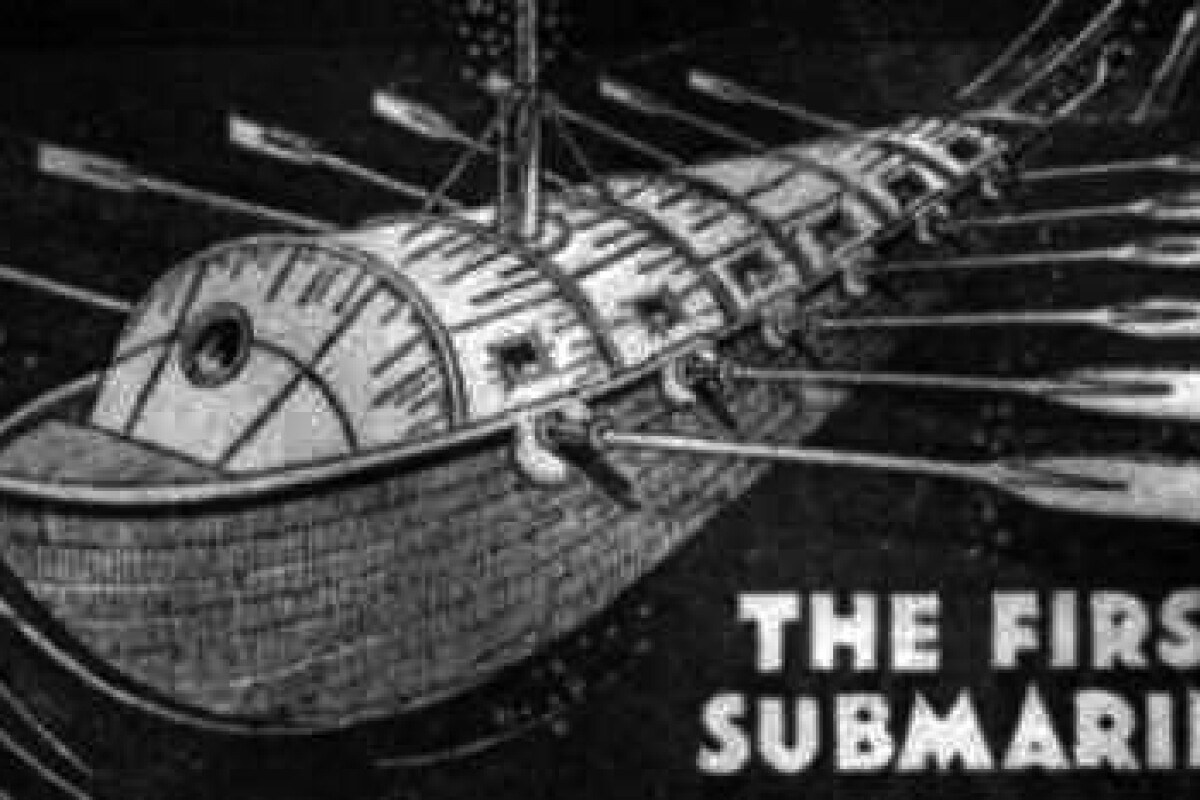The world's first practical submarine was built in 1620 by Dutch engineer Cornelis Jacobszoon Drebbel, under the patronage of James 1 of England. Drebbel built three submarines according to the sketchy information available from that time, each larger than the last and the third being capable of carrying 16 people, of which 12 were the oarsmen.
No credible illustrations or accurate descriptions remain of Drebbel's submarine, though it seems the last of the three prototypes constructed was probably a decked over and heavily modified rowboat which was regularly seen in the Thames river undergoing trials.
The oarsmen rowed one oar each, with the oars protruding from the side of the boat through waterproofed leather seals.
Air was supplied by snorkel-like tubes that were held above the water's surface by floatation devices, enabling the submarine to be underwater for long periods. Accounts suggest the boat could travel from Westminster to Greewich and back under water, completing the return journey in three hours at a depth around 15 feet below the surface.
A BBC article recently described the Drebbel submarine thus: "The whole submarine was covered in greased leather, with a watertight hatch in the middle, a rudder and four oars. Under the rowers' seats were large pigskin bladders, connected by pipes to the outside. Rope was used to tie off the empty bladders; in order to dive, the rope was untied and the bladders filled. To surface the crew squashed the bladders flat, squeezing out the water."
Some reports suggest Drebbel had a chemical means for generating fresh air in the submarine and although this seems highly implausible for the period, Drebbel's inventiveness and knowledge of chemical reactions suggest he certainly had the knowledge to achieve such a remarkable feat.
Though later renowned for inventing the first working thermostat and the first microsocope with two lenses, the following link from the University of Twente in Holland suggests Drebbel might have had the technology to generate oxygen from heated Potassium Nitrate (Saltpetre).
It reads: "Drebbel did two more chemical processes. He oxidized sulfur for sulfuric acid, through heating sulfur and potassium nitrate (saltpeter). He made it more efficiently than any other way at that time. It became the basis for John Roebuck's work for production in the lead chamber. He also found a way to make oxygen from heating saltpeter, which is now one of the standard way to produce it."
Some reports of the time suggest that King James I actually rode in the third submarine on a trip under the Thames in 1626. Though seeming to have the ear and favour of the King, Van Drebbel's invention failed to interest the British Navy despite a development period of 15 years, Drebbels' submarine never got beyond the trials stage. Ironically, three hundred years later, the submarine would become the most feared of all naval vessels.
Though Drebbel was a type of court inventor, the main purpose of his employment was in relation to his experience with chemicals and his knowledge of fireworks.
He was hired in 1604 after he had demonstrated his "perpetual clock" to King James I - it never needed winding, and was driven by changes in atmospheric pressure. Throughout his extraordinary life, Drebbel was never to achieve the fame and fortune his subsequent patents suggest he deserved.
His patents included a thermometer, a perpetual motion clock, a chimney, a dying process, a pump and his thermostat was led to the first automatic chicken egg incubator and the first oven with self-regulating temperature. His work with lenses saw him build microscopes and telescropes and even design and build a machine for grinding lenses.
Drebbel died in 1634 - he has a lunar crater named after him.





